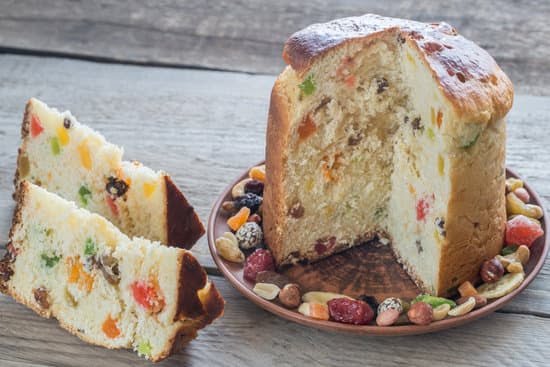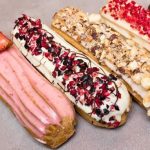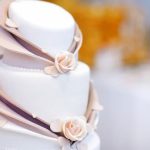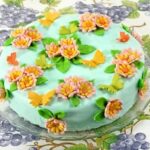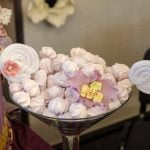Cake decoration plays an integral role in the overall appeal of a cake, and one of the key decisions that bakers face is choosing whether to use buttercream or royal icing. Both options have their merits and unique characteristics, making it a great debate among baking enthusiasts. In this article, we will explore the world of cake decoration, delving into the differences between buttercream and royal icing as popular choices for creating stunning cake designs.
Buttercream, with its creamy consistency and delicious taste, has long been a beloved choice for cake decorators. Made from a combination of butter or shortening, powdered sugar, and flavorings, buttercream offers versatility in both flavor and texture. On the other hand, royal icing, composed of egg whites and confectioners’ sugar, exudes elegance and dries hard for intricate detailing. As we dive deeper into these techniques, we will uncover their unique qualities along with helpful tips to achieve flawless decorations.
Comparing the texture, taste, and appearance of buttercream and royal icing will provide insight into how these options can complement various cake flavors and aesthetics. Additionally, factors such as climate conditions, occasion type, personal preference, ease of use, time required for preparation, drawbacks associated with each technique should be taken into consideration when selecting the ideal decorating method. Furthermore, we will discuss which technique works best for different cake designs by analyzing factors like intricacy desired aesthetic value.
As we delve into the world of cake decoration using buttercream and royal icing techniques in this comprehensive guidebook article split into sections to effectively cover all relevant aspects related to this topic-rest assured that you’ll gain not only knowledge but confidence in your ability to produce stunning desserts adorned with either buttercream or royal icing decorations.
Whether you are a professional baker looking to refine your skills or an avid home baker ready to take on new challenges in your kitchen creations-join us on an exciting journey exploring the possibilities of Buttercream vs Royal Icing Decorations.
Understanding Buttercream
Buttercream is a popular choice for cake decoration due to its delicious taste and versatility in creating various designs. It is made from a combination of butter, powdered sugar, and flavorings, such as vanilla extract or cocoa powder. The texture of buttercream can range from smooth and creamy to fluffy and light, depending on the desired consistency.
One of the key benefits of using buttercream for cake decoration is its ability to hold shape well. This makes it ideal for creating intricate piping designs, such as rosettes, ruffles, and shells. The creamy consistency of buttercream also allows for smoothening the surface of a cake and achieving flawless finishes.
To achieve smooth and flawless buttercream decorations, it is important to start with properly softened butter at room temperature. This ensures that the butter incorporates well with the powdered sugar and other ingredients, resulting in a smooth texture free from lumps. It is also recommended to use a stand mixer or electric hand mixer when preparing buttercream to ensure that all the ingredients are thoroughly combined.
Another tip for perfecting your buttercream decorations is to use a piping bag fitted with various tips for different designs. For example, open star tips can create beautiful rosettes and shells, while round tips are perfect for creating dots or writing on cakes. Additionally, chilling the cake before applying buttercream can help in achieving sharp edges and smoother finishes.
Royal Icing
Royal icing is a popular choice for cake decorating due to its classic and elegant appearance. It is made from a mixture of powdered sugar, egg whites or meringue powder, and water. This type of icing is known for its smooth and shiny surface, making it the perfect choice for creating intricate designs on cakes.
One of the key advantages of royal icing is its ability to dry hard. This makes it ideal for creating decorations that require stability and durability, such as delicate flowers, lace patterns, or 3D figures. Royal icing also has a long shelf life once dried, allowing for advanced preparation of decorations before assembling the final cake.
When working with royal icing, piping is a commonly used technique. Piping involves using a pastry bag fitted with various tips to create different shapes and designs on the cake’s surface. Flood icing is another technique often used with royal icing. This involves thinning down the icing to create a liquid consistency that can be poured onto the cake to cover larger areas smoothly.
To achieve beautiful details with royal icing, it’s important to have proper control over the pressure applied when piping or flooding. This allows for precise lines and smooth coverage on the cake’s surface. Adding color or tinting royal icing is also possible by using gel or liquid food coloring.
| Comparison | Buttercream | Royal Icing |
|---|---|---|
| Texture | Creamy and soft | Smooth and hard when dried |
| Taste | Rich and flavorful | Sweet and sugary |
| Appearance | Rustic and soft | Clean and polished |
In summary, royal icing is a classic and elegant choice for cake decorations. It offers the ability to create intricate designs that dry hard and add a polished look to any cake.
Whether you’re piping delicate lace patterns or flooding large areas with smooth coverage, royal icing allows for endless possibilities in cake decorating. However, it’s important to consider personal preferences, the occasion, and even climate when choosing between buttercream and royal icing as each has its own unique advantages.
Comparing Texture, Taste, and Appearance
When it comes to cake decoration, texture, taste, and appearance are important factors to consider. The choice between buttercream and royal icing can greatly impact the overall look and taste of a cake. Understanding the differences in texture, taste, and appearance of both options can help guide you in making the right decision for your cake decorating needs.
Texture is an essential aspect of cake decoration. Buttercream is known for its creamy and smooth consistency. It is made from a mixture of butter or shortening, powdered sugar, vanilla extract, and milk or cream. This results in a light and fluffy texture that can be easily spread or piped onto cakes. The versatility of buttercream allows for different techniques such as creating rosettes, borders, or covering an entire cake smoothly.
On the other hand, royal icing offers a completely different texture. It is made by combining powdered sugar with egg whites or meringue powder to create a stiff consistency. Royal icing dries hard once it sets, making it ideal for intricate designs such as piping flowers and creating lace-like patterns. This type of icing is commonly used in wedding cakes due to its elegant appearance.
Taste is another important factor to consider when choosing between buttercream and royal icing. Buttercream has a rich and sweet flavor that pairs well with various cake flavors. Its creamy texture enhances the overall taste experience of the cake. Royal icing, on the other hand, has a delicate sweetness that does not overpower the flavors of the cake itself.
Appearance plays a crucial role in determining the visual appeal of a cake. Buttercream decorations have a smooth and soft finish that adds elegance to any design. It can be easily colored using gel food coloring to achieve vibrant shades or pastel hues. In contrast, royal icing provides a glossy finish when dried which gives cakes a sophisticated look. The ability to pipe intricate details with precision makes royal icing suitable for creating exquisite designs.
| Aspect | Buttercream | Royal Icing |
|---|---|---|
| Texture | Creamy and smooth | Dries hard when set |
| Taste | Rich and sweet | Delicate sweetness |
| Appearance | Smooth and soft finish | Glossy finish when dried |
Factors to Consider When Choosing Between Buttercream and Royal Icing
When it comes to choosing between buttercream and royal icing for cake decoration, there are several factors to consider. Each technique has its own advantages and disadvantages, and the decision ultimately depends on personal preference as well as specific circumstances. Here are some factors to keep in mind when making your choice:
- Climate: One important factor to consider is the climate in which the cake will be displayed. If you live in a hot and humid environment, royal icing may not be the best option as it has a tendency to melt or become soft in high temperatures. On the other hand, buttercream can hold up better in warmer conditions.
- Occasion: The occasion for which the cake is being made can also play a role in determining the decorating technique. For formal events such as weddings or anniversaries, royal icing is often preferred due to its ability to create intricate designs and its elegant appearance. Buttercream, on the other hand, may be more suitable for casual occasions or children’s birthday cakes where a softer look is desired.
- Personal Preference: Ultimately, personal preference should be taken into account when choosing between buttercream and royal icing. Some individuals may prefer the creamy and smooth texture of buttercream, while others may appreciate the hard and delicate finish achieved with royal icing. It’s important to choose a technique that you are comfortable working with and that aligns with your aesthetic preferences.
- Pros and Cons: Consider weighing the pros and cons of each technique before making your decision. Buttercream is known for its versatility, great taste, and ability to easily achieve smooth finishes. However, it can be sensitive to temperature changes and may require refrigeration. On the other hand, royal icing dries rock hard which makes it ideal for creating intricate designs but it can have less favorable taste compared to buttercream.
Buttercream vs Royal Icing
When it comes to cake decoration, choosing between buttercream and royal icing can greatly impact the overall design and aesthetic of your creation. Each option has its own unique qualities that make it suitable for different types of cake designs. In this section, we will explore which technique is better suited for specific cake designs, taking into consideration factors such as intricacy, durability, and desired aesthetic.
- Wedding Cakes: Wedding cakes often feature intricate designs and delicate details. For these elegant and elaborate creations, royal icing is typically the preferred choice. Its ability to create hard and sturdy decorations makes it ideal for intricate piping work and creating delicate lace-like patterns. Additionally, royal icing has excellent staying power, ensuring that the decorations remain intact throughout the wedding festivities.
- Groom’s Cakes: Groom’s cakes often have a more masculine theme or design, such as sports-related motifs or liquor-inspired decorations. Buttercream is a great option for groom’s cakes due to its versatility in creating various textures and shapes. Whether you want to replicate the texture of a football or create a realistic bottle of whiskey out of frosting, buttercream allows for more creativity and flexibility when it comes to sculpting custom designs.
- Children’s Birthday Cakes: Children’s birthday cakes are often vibrant and playful, featuring fun characters or themed decorations. For these whimsical creations, buttercream is highly recommended. Its creamy consistency allows for smooth application when creating character designs or abstract shapes, making it easier to achieve bright colors and eye-catching details.
By considering the intricacy of the design, durability required, and desired aesthetic when selecting between buttercream and royal icing for specific cake designs, you can ensure that your decorative techniques complement your creative vision. It’s important to experiment with both options to discover which one works best for your personal style and preferences. Whether you choose buttercream or royal icing, the key is to have fun and enjoy the art of cake decoration.
Tips for Perfecting Your Buttercream or Royal Icing Decorations
When it comes to cake decoration, achieving professional-looking buttercream or royal icing designs requires some skill and practice. Whether you’re a beginner or an experienced baker, there are several tips and tricks that can help you perfect your decorating techniques.
Tips for Buttercream Decorations
- Use a good quality butter: The quality of the butter you use in your buttercream will directly affect the taste and texture of the frosting. Opt for unsalted butter for a smoother consistency.
- Properly cream the butter: To achieve a smooth and creamy texture, make sure to cream the butter properly before adding any other ingredients. This step is crucial for avoiding lumps in your buttercream.
- Gradually add powdered sugar: Adding powdered sugar gradually helps in achieving a silky smooth texture and prevents clumps from forming in your buttercream.
- Use gel food coloring: If you want to add color to your buttercream, opt for gel food coloring instead of liquid ones. Gel colors won’t alter the consistency of the frosting and give you vibrant colors.
- Practice using different piping tips: Experiment with different piping tips to create various designs, from simple borders to intricate flowers. Start with basic shapes like rosettes and stars before moving on to more complex designs.
Tips for Royal Icing Decorations
- Achieve the right consistency: Depending on the technique you’re using, royal icing may require different consistencies – stiff, medium, or flooding consistency. Adjust the amount of water or icing sugar accordingly.
- Piping bag technique: Fill your piping bag only half full with royal icing to avoid air bubbles that can disrupt your design. Twist the top tightly before starting to pipe.
- Master pressure control: Achieving consistent pressure while piping is key to creating even lines and shapes. Practice controlling the pressure by piping on parchment paper or a practice board before moving on to your cake.
- Wet-on-wet technique: To create beautiful marbled or blended designs with royal icing, apply a base layer of icing and then immediately pipe your second color onto it while it’s still wet. Use a toothpick or skewer to swirl the colors together for a stunning effect.
- Add details with edible markers: Once your royal icing decorations are completely dry, you can enhance them further by adding intricate details with edible markers. These markers allow you to draw fine lines and add shading to make your designs pop.
By following these tips and practicing your skills, you’ll be able to create buttercream and royal icing decorations that are not only visually appealing but also delicious. Remember, practice makes perfect, so don’t be afraid to experiment and explore different techniques to find your personal decorating style.
Conclusion
In conclusion, the choice between decorating cakes with buttercream or royal icing ultimately comes down to personal preference. Both options have their own unique benefits and characteristics that make them suitable for different cake designs and occasions.
Buttercream offers a deliciously creamy texture and versatility, allowing for smooth and flawless decorations. It is perfect for creating intricate details and can hold its shape well. Additionally, buttercream has a wide range of flavors that complement various cake flavors, providing a delectable taste experience.
On the other hand, royal icing is known for its classic elegance and ability to create intricate designs. It dries hard, making it ideal for firm decorations such as flowers and delicate piping work. Royal icing also adds a professional touch to cakes, giving them a refined appearance.
When choosing between buttercream and royal icing, it’s important to consider factors such as climate, occasion, and personal preference. The climate plays a significant role in determining the durability of the decorations – buttercream may melt in warmer temperatures while royal icing remains intact. The occasion at hand also influences the choice – an elegant wedding cake may call for royal icing decorations while a playful children’s birthday cake may benefit from vibrant buttercream designs.
Ultimately, there is no definitively better choice between buttercream and royal icing as it all boils down to personal preference. So why not experiment with both techniques? Embrace your creativity and try out different cake designs using both buttercream and royal icing to discover which one resonates most with your unique style and vision. At the end of the day, the art of cake decoration is about expressing your individuality and creating something truly special.
Frequently Asked Questions
Is buttercream or royal icing better for cake decorating?
The choice between buttercream and royal icing for cake decorating ultimately depends on personal preference and the desired outcome. Buttercream, made from butter and powdered sugar, is known for its creamy texture and smooth consistency. It is easy to work with and can be used to achieve various decorative effects, such as piping borders, flowers, or intricate designs.
Buttercream also has a rich flavor that pairs well with many cake flavors. However, it is not as firm or durable as royal icing, which may be a consideration for certain cake decorations.
Why use royal icing instead of buttercream?
Royal icing offers different advantages over buttercream when it comes to cake decorating. Made from powdered sugar, egg whites, and lemon juice or water, royal icing hardens when it dries, creating a sturdy surface that holds its shape well. This makes it ideal for intricate designs like lace work or delicate flowers that require structure.
Royal icing can also be used to create smooth finishes on cakes because of its ability to dry with a glossy appearance. Although it can be more challenging to work with than buttercream due to its stiff consistency, royal icing gives decorators greater precision and control.
What frosting is best for decorating cakes?
Determining the best frosting for decorating cakes depends on several factors such as taste preferences, decoration techniques desired, and the desired final look of the cake. Both buttercream and royal icing have their strengths in different aspects of cake decoration. Buttercream is versatile enough to create beautiful piped details while providing a soft and creamy texture that complements the cake’s flavor profile.
It works well for spreading layers smoothly or achieving textured finishes like rosettes or ruffles. On the other hand, if intricate designs requiring structure are desired or a hardened finish is needed for specific decorations like gingerbread houses or cookies stacked on top of cakes, royal icing would be the better choice due to its ability to harden as it dries while providing an elegant gloss when finished properly.

Welcome to our cake decorating blog! My name is Destiny Flores, and I am the proud owner of a cake decorating business named Cake Karma. Our mission is to provide delicious, beautiful cakes for all occasions. We specialize in creating custom cakes that are tailored specifically to each customer’s individual needs and tastes.

